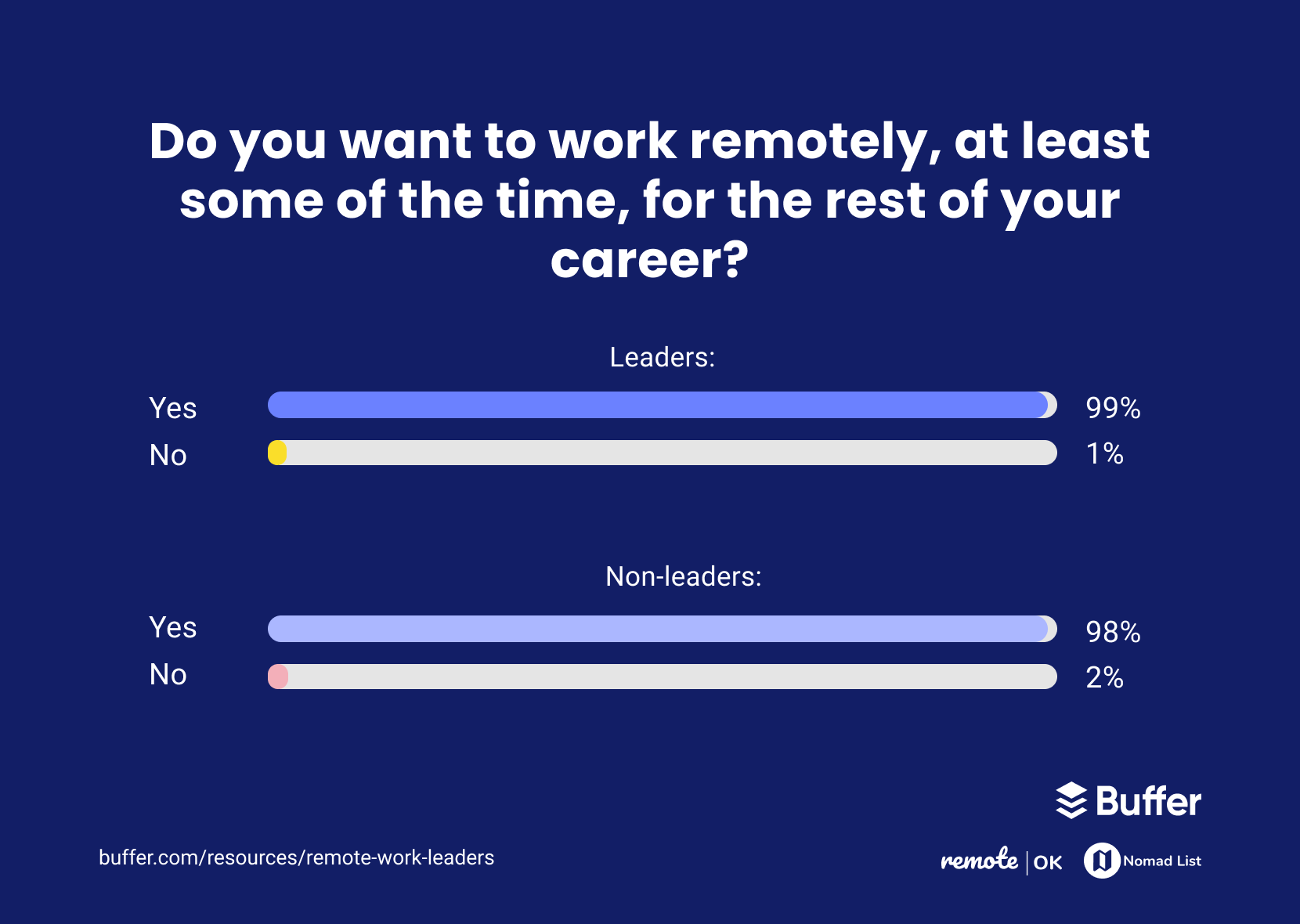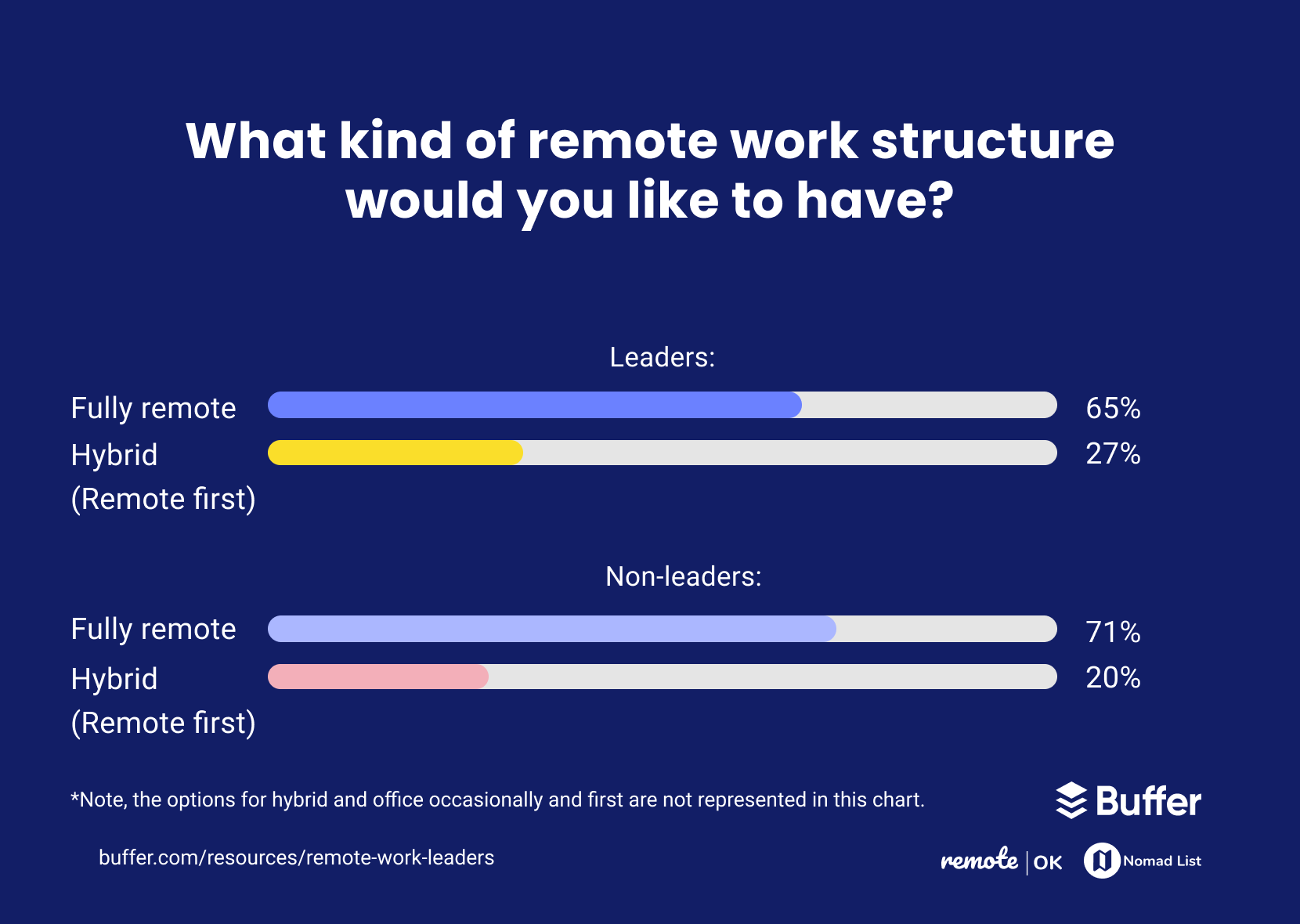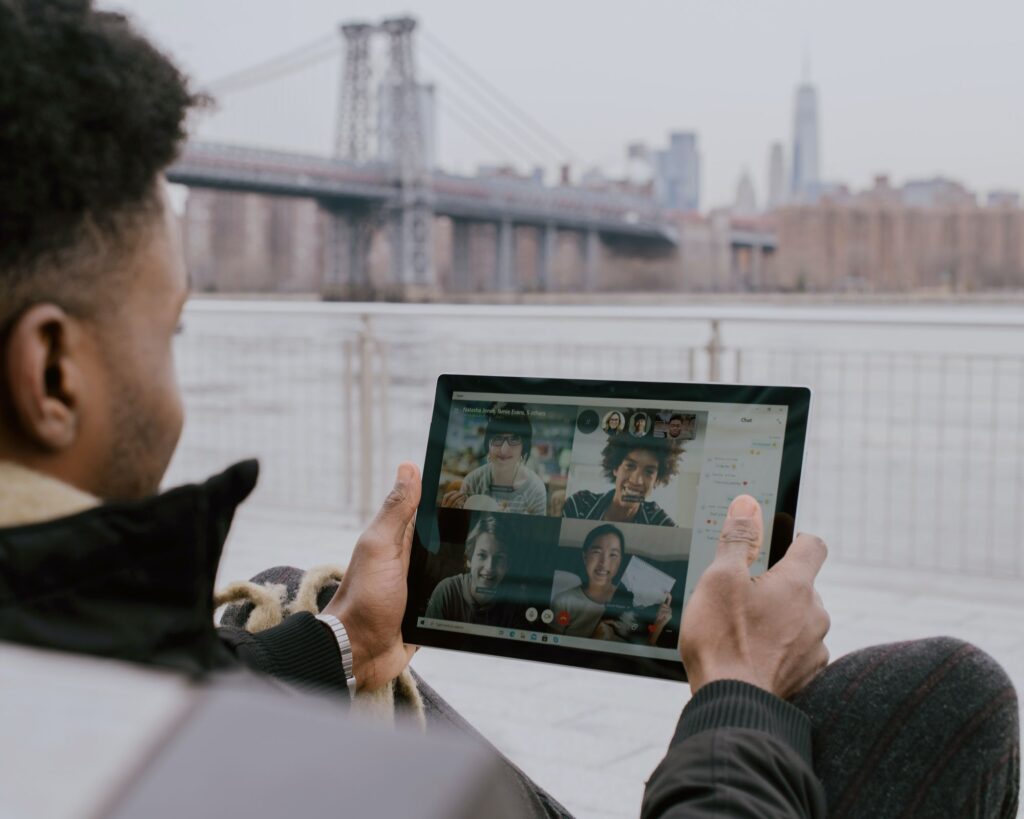How Are Leaders Experiencing Remote Work?

We’ve been writing and publishing Buffer’s State of Remote Work report for six years now, and we’ve learned a lot about the trends, benefits, and struggles of remote workers along the way. This year, after releasing the report, we had several people comment that they wondered what the results would be like for only people who are managers — and it’s a good question!
We weren’t clear enough when publishing the report that the State of Remote Work already includes people managers and remote work leaders. Still, it felt like an opportunity to dive deeper into the data to pull out more data specific to leaders.
While we didn’t ask if someone was a people manager when they completed the State of Remote Work survey (don’t worry, it’s already on the list for next year), we did ask about the kind of role that someone has, and one option was “leadership.” So, here’s what we learned looking at the results from the State of Remote Work and comparing those who work in leadership to those who don’t — the answers might surprise you.
Leaders still overwhelmingly want to work remotely
To start, leaders still want to work remotely for the rest of their careers (99 percent selected this option) and would recommend remote work to others (another 99 percent selected this option). This is only slightly higher than non-leaders, who were at 98 percent for both questions. Ultimately, no big difference between leaders and non-leaders here.

We also asked respondents to describe their experience with remote work — and interestingly, leaders were more likely to select that they had a positive experience. Ninety-six percent of leaders selected that their experience was very positive or somewhat positive compared to 90 percent of non-leaders.
The difference between how leaders and non-leaders experience remote work isn't drastic, though leaders are more likely to have a positive experience than non-leaders.
Leaders do work differently
When it comes to how remote leaders work, there are some differences between non-leaders and leaders who work remotely in their preferences for working in a hybrid setup, their work location, and being on camera.
The biggest difference is that while leaders still primarily prefer working fully remotely (65 percent selected fully remote as their preferred work structure), there is a greater number who would prefer a hybrid but remote first set up, with 27 percent of leaders selecting that option compared to 20 percent of non-leaders.

Leaders are also more likely to have experience with the hybrid setup. Forty-two percent of leaders worked in a hybrid setup compared to 35 percent of non-leaders.
Similarly, leaders were less likely to work from home than non-leaders, though the majority still did; 75 percent of leaders selected they worked from home compared to 83 percent of non-leaders.
The final question we looked at was about being on camera — 76 percent of leaders prefer to …read more
Source:: Buffer Blog











